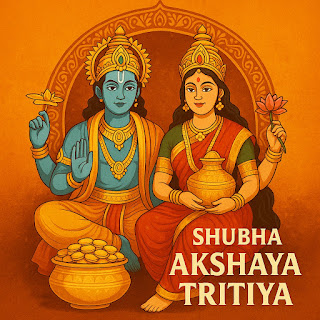Is the Grass Really Greener on the Other
Side?
The human heart often yearns for what lies
beyond, imagining distant lives as fuller or opportunities as brighter. The
adage “the grass is always greener on the other side” captures this longing,
but it hides a trap: the illusion that elsewhere is always better. What if that
vibrant green is artificial, a facade masking barren soil? Or worse, what if
it’s fertilized by hollow promises and deception? Through the fable of the
Donkey and the Dog, the Ramayan’s tale of Bharat’s struggle, and the Bhagavad
Gita’s teachings, we uncover the folly of chasing illusions and the value of
contentment where we stand.
The Donkey and the Dog: A Lesson in Envy.
A donkey toiled on a farm, hauling loads
while the dog lounged by the farmer’s feet, fed with scraps from the farmer’s
plate and petted fondly. Envious, the donkey thought, “That dog’s grass is
greener—lazing while I sweat.” Ignoring the dog’s duty to guard the house, it
believed barking trumped labour.
One night, to win the farmer’s affection,
the donkey brayed loudly, mimicking the dog’s bark. The noise woke the
household, and the farmer, fearing thieves rushed outside. Upon realizing the
source of the commotion, he beat the donkey for the disturbance. Limping back
to its stable, the donkey muttered, “That dog’s life is a sham, fed by the
master’s hollow praise.”
The donkey’s tale shows our tendency to
covet others’ lives, only to dismiss them when unattainable. Its mistake was
falling for an illusion—the dog’s “green grass” was partly artificial, a
curated image of ease, and partly fertilized by fleeting praise. This urges us
to embrace our purpose over deceptive ideals.
Bharat’s Struggle in the Ramayan.
In the Ramayan, Bharata, Shri Ram’s devoted
brother, faces the temptation to chase a seemingly greener path. When Ram was
exiled for fourteen years due to Kaikeyi’s boon, Bharat was tasked with ruling
Ayodhya. Heartbroken by his mother’s scheme and Ram’s departure, Bharat rejected
the throne, believing the “greener grass” lay in joining Ram’s righteous exile
with Sita and Lakshman.
Bharat journeyed to Chitrakoot, begging Ram
to return, but Ram, steadfast in dharma, refused, explaining their father
Dasharatha’s word must be honoured. Ram counselled Bharat that ruling Ayodhya
was his sacred duty. Seeing the throne’s lustre as artificial—a mirage of power
fed by political deceit—Bharat ruled as a caretaker, placing Ram’s sandals on
the throne. His humility transformed Ayodhya’s duty into devotion.
Bharat’s journey contrasts with the donkey’s
envy. While the donkey chased an illusion of ease, Bharat longed for Ram’s
exile but saw its “greenness” as a romanticized ideal. His wisdom teaches us to
discern when distant pastures are artificial or hollow and to find meaning in
our responsibilities.
The Bhagavad Gita’s Call to Contentment.
The Bhagavad Gita offers guidance in Chapter
6, Verse 16: “There is no possibility of one’s becoming a yogi, O Arjuna, if
one eats too much or eats too little, sleeps too much or does not sleep
enough.” Krishna’s counsel on moderation extends to desires. Chasing others’
“greener grass”—status, freedom, or ideals—disrupts inner peace. Krishna urges
contentment in sufficiency, neither craving more nor rejecting what we have.
The donkey’s longing for the dog’s ease and
Bharat’s yearning for Ram’s exile reflect this imbalance. The donkey fell for a
life propped by artificial comforts and hollow praise, hiding the dog’s
struggles. Bharat nearly abandoned duty for an idealized exile, not seeing its
hardships. Detachment and gratitude help us avoid believing happiness lies
elsewhere, finding joy now.
A Path to True Contentment.
The donkey’s misadventure, Bharat’s clarity,
and the Gita’s teachings reveal that THE GRASS SEEMS GREENER WHEN WE FAIL TO
NURTURE OUR OWN, often fooled by artificial facades or hollow promises. To
avoid this illusion:
- Embrace Your Purpose: Like the donkey, value your
unique role over envying others’ lives.
- Question Illusions: As Bharat did, ask if a path’s
green is artificial or fed by deceit.
- Practice Moderation: Heed the Gita’s call to
balance, finding contentment in what you have.
- Cultivate Gratitude: Tend your “grass” by
appreciating your opportunities and blessings.
A Call to Clarity.
The Donkey and the Dog, Bharat’s
steadfastness, and the Gita’s wisdom show that the grass on the other side
seems greener because it’s artificial or fertilized by hollow
promises—illusions of perfection. By choosing contentment, humility, and
effort, we transform our patch of earth into something vibrant. Let us resist
“greener” pastures, rooting ourselves in the present and finding richness where
we stand.









